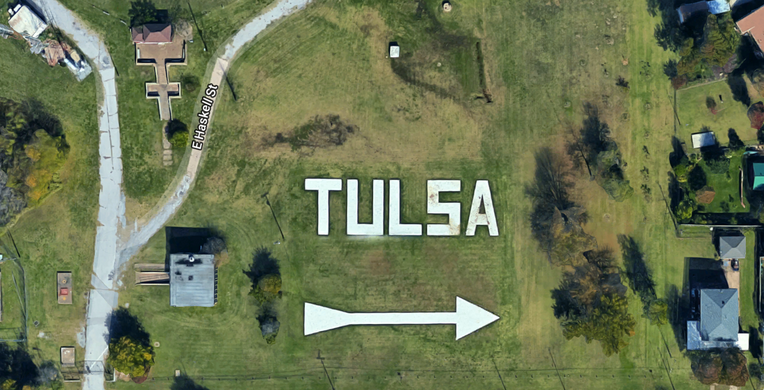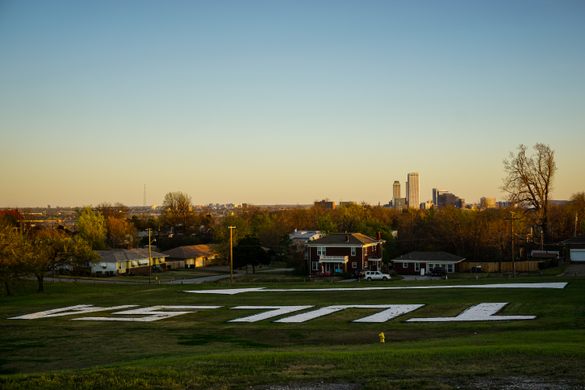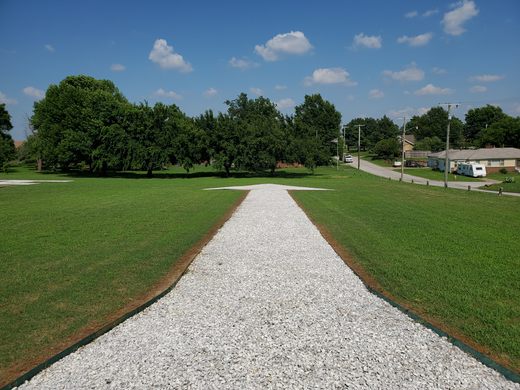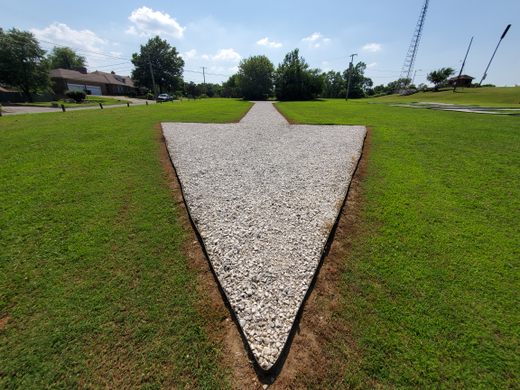AO Edited
Aviator’s Arrow
This beacon for pre-radar pilots once guided Charles Lindbergh to a safe touchdown in Tulsa.
Atop lush Reservoir Hill in Tulsa, Oklahoma, sits a sign—well, more like a beacon. Its letters are 50 feet tall and are made from tons of crushed marble. The sign spells out “TULSA” in huge white letters, and underneath is a long, white arrow that points towards the city’s International Airport.
The historic sign, dubbed Aviator’s Arrow, was created in 1927, when the giant letters pointed in the direction of the city’s former landing strip at McIntyre Airport. That year the sweeping sign guided famed pilot Charles Lindbergh to a safe touchdown. The legendary aviator was visiting Tulsa for the state fair during a celebrity tour after completing his famous nonstop crossing of the Atlantic Ocean.
To commemorate this, and the many other pre-radar fliers that relied on this oversized monogram, the city of Tulsa recently refurbished Aviator’s Arrow and moved it 300 feet to east, so that it points to the current International Airport. The refurbishment was part of a citywide project for 100 neighborhoods in Tulsa, including Reservoir Hill. Residents of the area jumped at the chance to restore the this ode to aviation, despite the technological advances the skies have seen since. The bright white arrow can still be seen from the sky today by overpassing planes.





















Follow us on Twitter to get the latest on the world's hidden wonders.
Like us on Facebook to get the latest on the world's hidden wonders.
Follow us on Twitter Like us on Facebook